Keywords
|
| Mobile Adhoc-network, internet gateway discovery approaches performance study- packet delivery ratio, throughput and packet loss ratio |
INTRODUCTION
|
| The term MANET (mobile Ad hoc network) refers to a set of wireless nodes that can communicate and move at the same time. MANET does not needs any fixed infrastructure for communication, but the nodes are communicated by routing packets in the system. |
| Multi hop wireless access network are a key technology in future IP based mobile systems, because of limited transmission range of wireless nodes a variety of routing algorithms were developed to give mobile nodes(MN) is mobile Ad hoc networks connectivity (MANET) [4],[9],[10]. Therefore this routing algorithm must have a functionality to interact with gateway that acts as an interface between a mobile Ad hoc network and the wired internet. Ad hoc network on demand distance vector (AODV) [3],[7] is a commonly used Ad-hoc routing protocol. The basic idea is to use the extended route discovery procedure so that if it can be used to find out only the destination mobile node but also to discover the gateway. In this paper we have described the design and analysis of various gateway discovery approaches and studied the performance different scenarios using NS2 based stimulation. |
II. RELATED WORKS
|
| To enhance ad-hoc routing protocol, several approaches are used to suppose MN accessing the internet were developed. Firstly, there is a proactive approach that is based on gateway advertisements. These advertisement are flooded into the MANET by the internet gateway periodically to indicate the presence of the gateway. Second, there is a reactive approach where MANET attendants reactively ask gateway services by broadcasting solicitation. |
| Gateway discovery methods [1] for ad- hoc networks which are based on the proactive [2] and reactive algorithms have been discussed and investigated in [6] and [8]. |
2.GATEWAY DISCOVERY APPROACHES:
|
| Depending on the gateway discovery, the approaches are classified into the following three categories |
| A. Proactive gateway discovery. |
| B. Reactive gateway discovery. |
| C. Hybrid gateway discovery. |
| A. Proactive gateway discovery: |
| Proactive gateway discovery is the table driven format. The gateway itself starts the proactive gateway discovery by periodically broadcasting the gateway advertisement (GWADV) message. This message is extended version of RREP-1 message containing RREQ ID from RREQ message and is transmitted at regular intervals after the expiration of gate timer |
| (ADVERTISEMENT INTERVAL). |
| B. Reactive gateway discovery: |
| The reactive gateway discovery is initiated by a mobile node that is to create or update a route entry to a gateway. If a source mobile node wants to communicate with an internet node, it first performs the expanding ring search techniques to find the destination within the ad hoc network. When it obtains no corresponding route reply even after a network-wide search, the source mobile node broadcasts a RREQ-I message to the ALL-MANET-GW-MULTICAST address. This is the IP address for group of all gateways. Thus only the gateways receive and reply to this message. The intermediate mobile nodes receiving receiving this message simply rebroadcast it after checking the RREQ ID field to avoid any kind of duplicate broadcast. After receiving the RREQ-1, the gateway unicast back RREP-1 message to the source node. The source then selects one of the hop count and forwards the data packets to the selected gateways. |
C. Hybrid gateway discovery:
|
| Hybrid gateway discovery is the combination of proactive and reactive approaches. In hybrid gateway approach the gateway periodically broadcasts the GWADV message. The TTL is set to ADVERTISEMENT ZONE so that the advertisement message can be forwarded only upto this minimal number of hops through the ad hoc network. The mobile nodes within this receive this message and set according to the proactive approach. The node outside this region discovers the default routes to the gateways using the reactive approach. |
III. SIMULATION MODEL
|
| We have done our simulation based on ns-2.35 [11]. Our main goal was to measure the performance of the different gateway discovery approaches under a range of varying network conditions. In order to prevent indefinite waiting for these data packets, the packets are dropped from the buffers when the waiting time exceeds 30 seconds. The interface queue has the capacity to hold 50 packets and it is maintain as a priority queue. In our simulation environment the MANET nodes use constant bit rate (CBR) traffic sources when they send data to the Internet domain. We have used the cbrgen traffic-scenario generator tool available in NS2 to generate the CBR traffic connections between the nodes. We have used two different communication patterns corresponding to 5 and 10 sources. The complete list of simulation parameters is shown in Table 1. |
IV. PERFORMANCE METRICS
|
| We have primarily selected the following three parameters in order to study the performance comparison of the three gateway discovery approaches. |
| Packet delivery ratio: This is defined as the ratio between the number of delivered packets and those generated by the constant bit rate (CBR) traffic sources. |
| Throughput: It’s the average number of messages successfully delivered per unit time i.e. average number of bits delivered per second. |
| Packet loss ratio: The number of data packets that are not successfully sent to the destination. In terms of dropped packets. |
V. SIMULATION RESULTS AND ANALYSIS
|
| In this section we have studied the effect of the three gateway discovery approaches under increasing the number of sources on the performance of the hybrid ad-hoc network. In an area of 800m x 800m a number of mobile node positioned randomly. The mobile node do not move, i.e., they remain static. All mobile nodes do not create data traffic and are thus, merely use to establish connection for a test mobile node(MN) within the ad-hoc network. |
| A. Packet Delivery Ratio Comparison |
| From Figure 6 and we see that the proactive approach has better packet delivery performance than the reactive approach. This happens because due to the periodic update of route information form the gateway, routes form all the nodes to the gateway are always available. As a result majority of the packet are delivered smoothly. In case of reactive approach, a node wishing to send data to the destination needs to find route to the gateway first. This takes a certain amount of time and no packet can be send during this period due to the unavailability of routes. |
| B. Throughput Comparison |
| From Figure 8 we see that the reactive approach as better throughput performance than the proactive and hybrid approaches. The throughput of both proactive and reactive approaches increases when time increases. Proactive throughput decreases in a stepper and more rapid fashion. This is attributed to excessive channel usage by regular route table updates. Furthermore, as mobility increases, more event-triggered updates are generated resulting in even more throughput decrease. This problem is present in reactive since routes are only generated on demand. So reactive approach stands high. |
| C. Packet Loss Ratio Comparison |
VI. CONCLUSION
|
| In this paper we have described the design and implementation of the various gateway discovery approaches and carried out a detailed ns2 based simulation to study and analyse the performance differentials of these approaches under different scenarios. From the simulation results we see that the proactive approach shows better packet delivery performances than the reactive approach mainly due to the instant availability of fresher and newer routes to the gateway all the time. In terms of throughput reactive approach performances has been well being than the proactive and hybrid approach. Reactive is also superior in packet loss ratio. |
| In our future work, we plan to study the performance of these gateway discovery approaches under other network scenarios by routing overhead, control overhead, mobility models and speed of mobile nodes etc. |
Tables at a glance
|
 |
| Table 1 |
|
| |
Figures at a glance
|
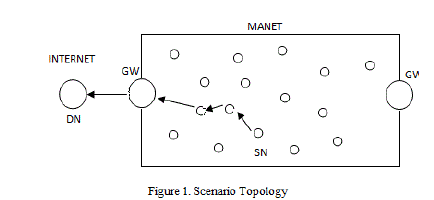 |
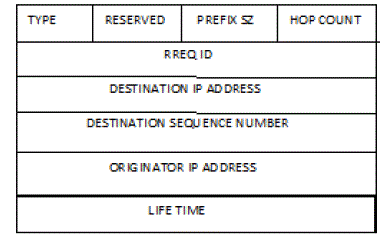 |
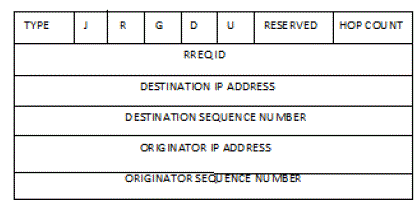 |
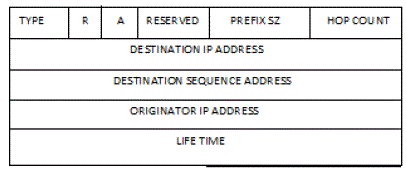 |
| Figure 1 |
Figure 2 |
Figure 3 |
Figure 4 |
 |
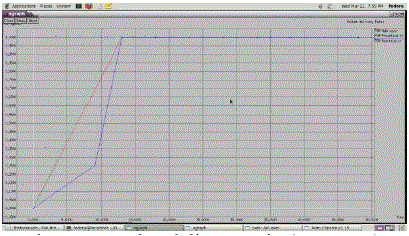 |
 |
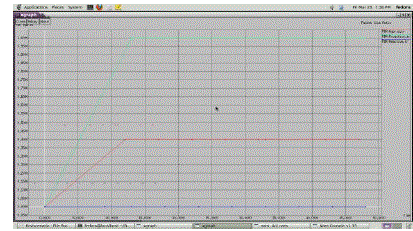 |
| Figure 5 |
Figure 6 |
Figure 7 |
Figure 8 |
|
| |
References
|
- J. Macker and S. Corson, Mobile Ad hoc Networks (MANET), http://www.ietf.org/charters/manet-charter.html, IETF Working Group Charter, 1997.
- . S. R. Das, C. Perkins, and E. Royer, Performance comparison of Two On-demand Routing Protocols for Ad Hoc Networks, Proc. of IEEE INFOCOM2000, March 2000.
- J. Broch, D.A. Maltz, D.B. Johnson, Y.C. Hu, and J. Jetcheva, A Performance Comparison of Multi-Hop Wireless Ad Hoc Network Routing Protocols,Proc. of the ACM/IEEE International Conference on Mobile Computing and Networking (MobiCom), October 1998.
- Vincent D. Park and M. Scott Corson, A performance comparison of TORA and Ideal Link State routing, Proc. of IEEE Symposium on Computers andCommunication, June 1998.
- Bernd Freisleben and Ralph Jansen, Analysis of routing protocols for ad hoc networks of mobile computers, Proc. of the 15th IASTED InternationalConference on Applied Informatics, pages 133–136, Innsbruck, Austria, February 1997.
- S.R. Das, R. Castaneda, J. Yan, and R. Sengupta, Comparative performance evaluation of routing protocols for mobile, ad hoc networks, Proc. of 7thInternational Conference on Computer Communications and Networks (IC3N), pages 153–161, October 1998.
- S. Corson, and J. Macker, Mobile Ad hoc Networking (MANET): Routing Protocol Performance Issues and Evaluation Considerations, RFC 2501,January 1999.
- David B. Johnson, Routing in Ad Hoc Networks of Mobile Hosts, Proc. of the IEEE Workshop on Mobile Computing Systems and Applications,pages 158-163, December 1994.
- Charles E. Perkins and PravinBhagwat, Highly dynamic Destination-Sequenced Distance-Vector routing (DSDV) for mobile computers, Proc. of theSIGCOMM ’94 Conference on Communications Architectures, Protocols and Applications, pages 234–244, August 1994.
- David B. Johnson, David A. Maltz, and Yih-Chun Hu, The Dynamic Source Routing Protocol for Mobile Ad Hoc Networks (DSR), <draft-ietfmanet-dsr-10.txt> Internet-draft, 19 July 2004.
- C. Perkins, E. Belding-Royer, and S. Das, Ad hoc On-Demand Distance Vector (AODV) Routing, RFC 3561, July 2003.
- V. Park and S. Corson, Temporally Ordered Routing Algorithm (TORA) Version 1, Functional specification IETF Internet draft,http://www.ietf.org/internet-drafts/draft-ietf-manet-tora-spec-01.txt, 1998.
- Kevin Fall and KannanVaradhan, editors, NS-Documentation, http://www.isi.edu/nsnam/ns/ns-documentation.html, April 2005.
|